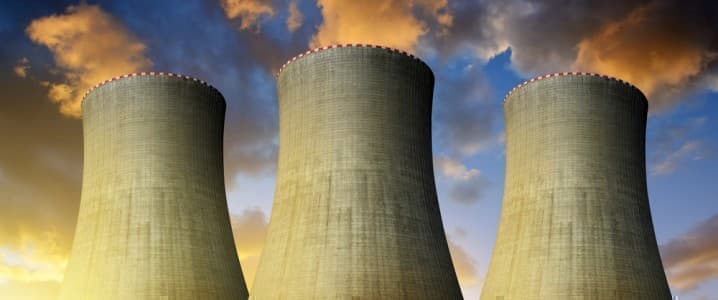Nuclear is struggling in the United States. While the U.S. retains its position as the largest nuclear energy producer in the world, representing a whopping 30 percent of all nuclear power produced globally, those numbers are in decline. More nuclear plants are going offline than are being constructed, and those that are still up and running are relying more heavily on state government subsidies than ever before.
Adding to the issue, while nuclear becomes a less and less profitable industry in the United States, cleaning up and storing nuclear waste is costing taxpayers more than ever before. This year, nuclear fuel storage cost U.S. citizens around $35 million, a number that will seem small in just a few years, when prices are expected to rise exponentially.
Setting up new nuclear power plants is just as cost-prohibitive, thanks to extremely high capital costs as well as pricey operating costs. As the nonprofit information organization Bulletin of the Atomic Scientists breaks it down, “capital costs include site preparation, engineering, manufacturing, construction, commissioning, and financing. Operating costs include fuel costs (from uranium mining to fuel fabrication), maintenance, decommissioning, and waste disposal.” The capital costs incurred by nuclear power production are significantly higher than those of traditional fossil fuels like coal and natural gas, and thanks to especially stringent licensing and design requirements, the annual cost of repaying initial investment is much higher for nuclear as well.
The extremely high cost of building a new nuclear power plant, which involves a team of specialists, years of research and development, and, more often than not, lawsuits and design changes, makes nuclear unable to compete in the United States energy market. As the market has become flooded with ultra-cheap natural gas gushing out of West Texas’ Permian Basin, it has essentially priced nuclear out of the market.
Despite its high cost, however, nuclear remains one of the most promising forms of energy production for battling climate change and increasing electricity demand around the world, thanks to its ultra-low emissions and extreme energy efficiency. So this begs the question: how do we make nuclear more affordable?
“Standardized designs and downsized reactors can help. Governments can offer additional support,” says the Bulletin of the Atomic Scientists. But that still might not be enough to keep the nuclear power industry alive in the United States.” Related: Can Artificial Intelligence Save The Nuclear Industry?
To date, there has not been a standard design for building new nuclear plants, particularly in the United States, where design has fluctuated along with new technological developments as well as diverse environmental conditions. Finding a way to standardize nuclear power plant design, and therefore make the construction process more efficient, not just in the United States but around the world, will be the “most effective way to reduce the total price of nuclear energy.”
One of the possible solutions to making efficiency and standardization more feasible in the U.S. nuclear energy industry is the use of small modular reactors, which could be built off-site. “Because of their small size and relative design simplicity, it is feasible to build modules primarily in a factory setting and then transport the completed modules to the plant site for installation. This would significantly improve construction efficiency and reduce capital costs,” says the Bulletin. “These simplified reactors are also expected to have lower operating and maintenance costs. Due to the higher surface-to-volume ratio for these reactors compared with traditional reactors, many safety provisions for heat removal are unnecessary.”
If nuclear has any hope of staying competitive in the United States, it will need to start instating some of these new strategies and do so in a hurry. While these developments will do nothing to address the increasing burden of nuclear waste management, however, there may soon be a solution for that as well, as more and more companies are looking into Artificial Intelligence and robots to serve as the new, unpaid workforce for one of the world’s most dangerous jobs.
By Haley Zaremba for Oilprice.com
More Top Reads From Oilprice.com:
- The West Just Made A Big Mistake In Middle East
- Shale Pioneer: Fracking Is An “Unmitigated Disaster”
- China Launches World’s First Smart Oil Tanker


















